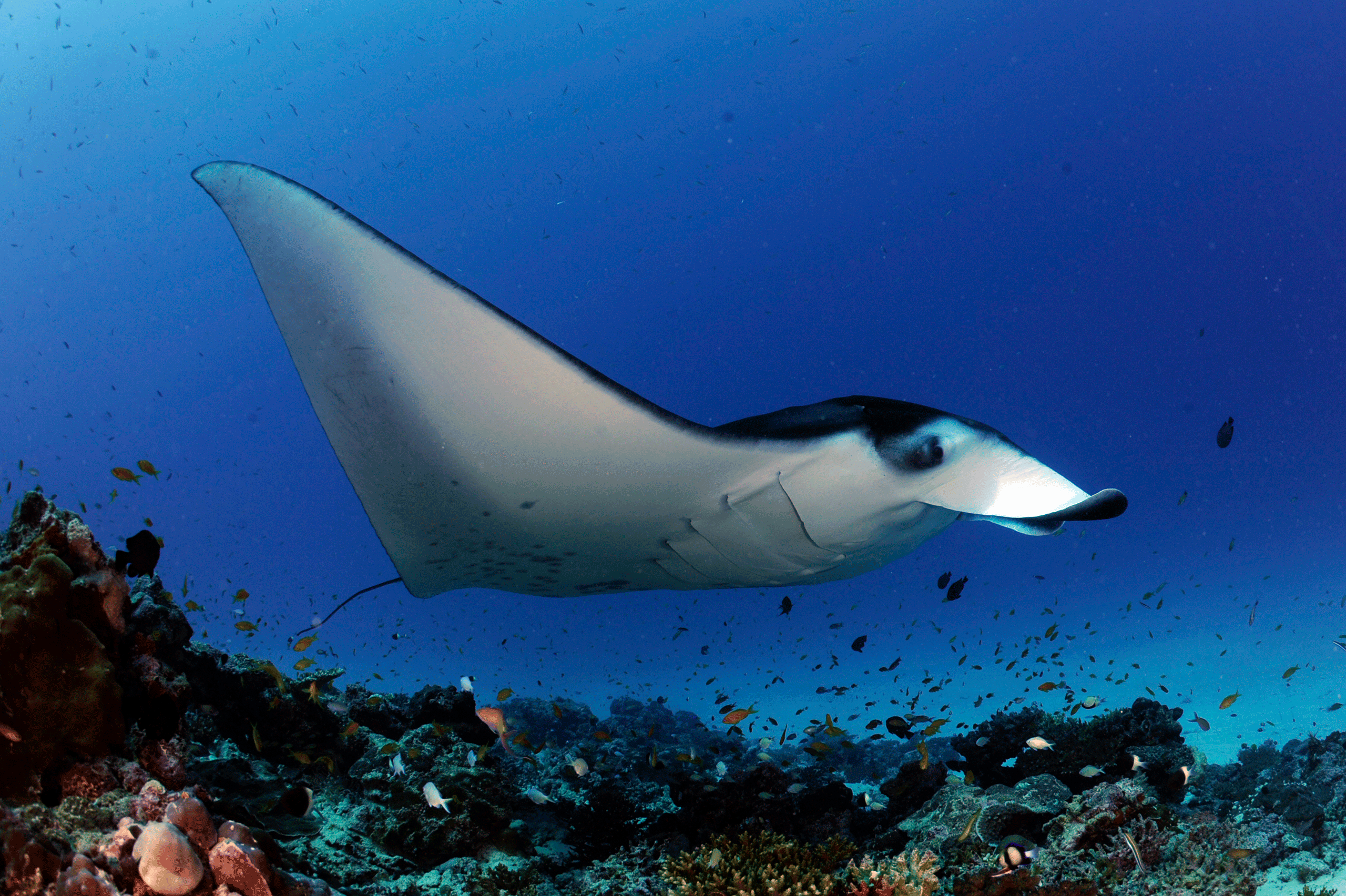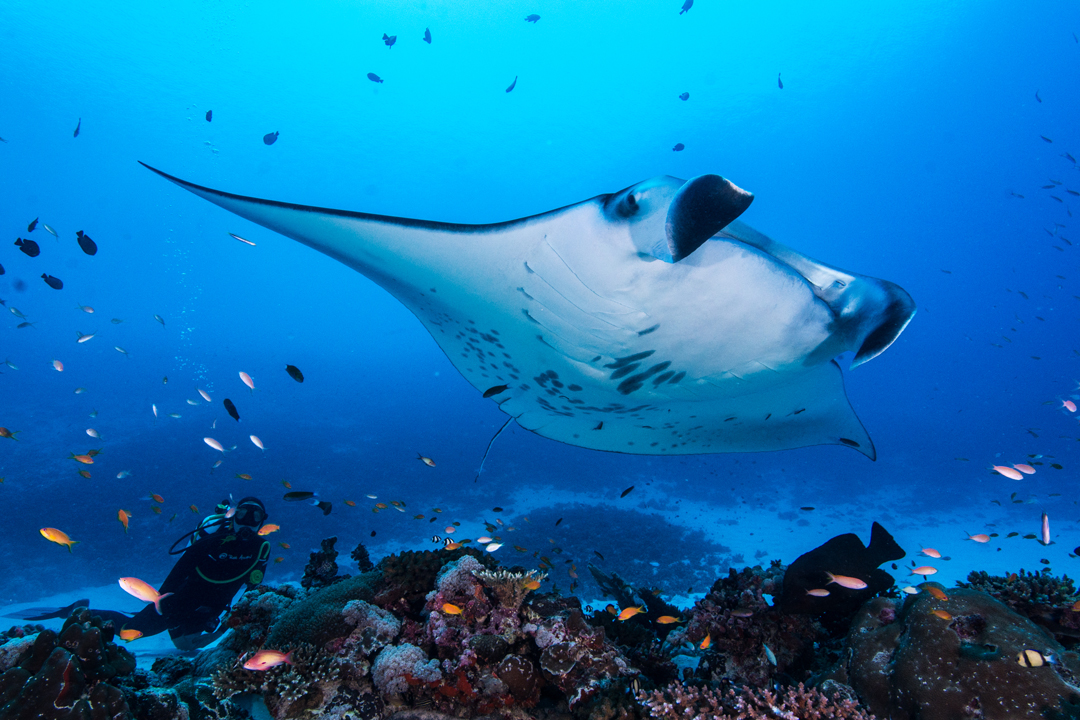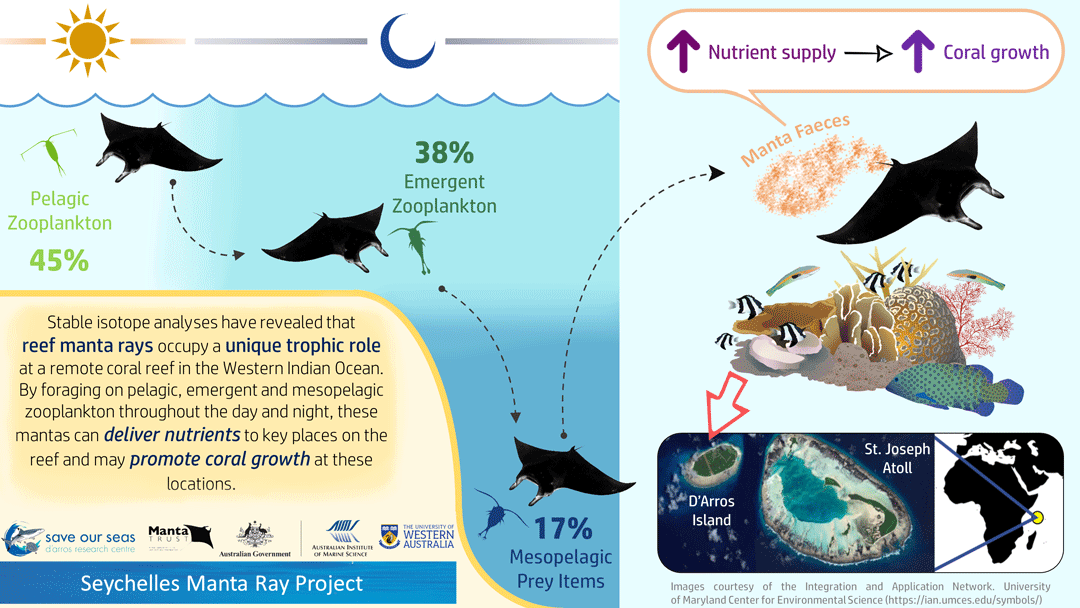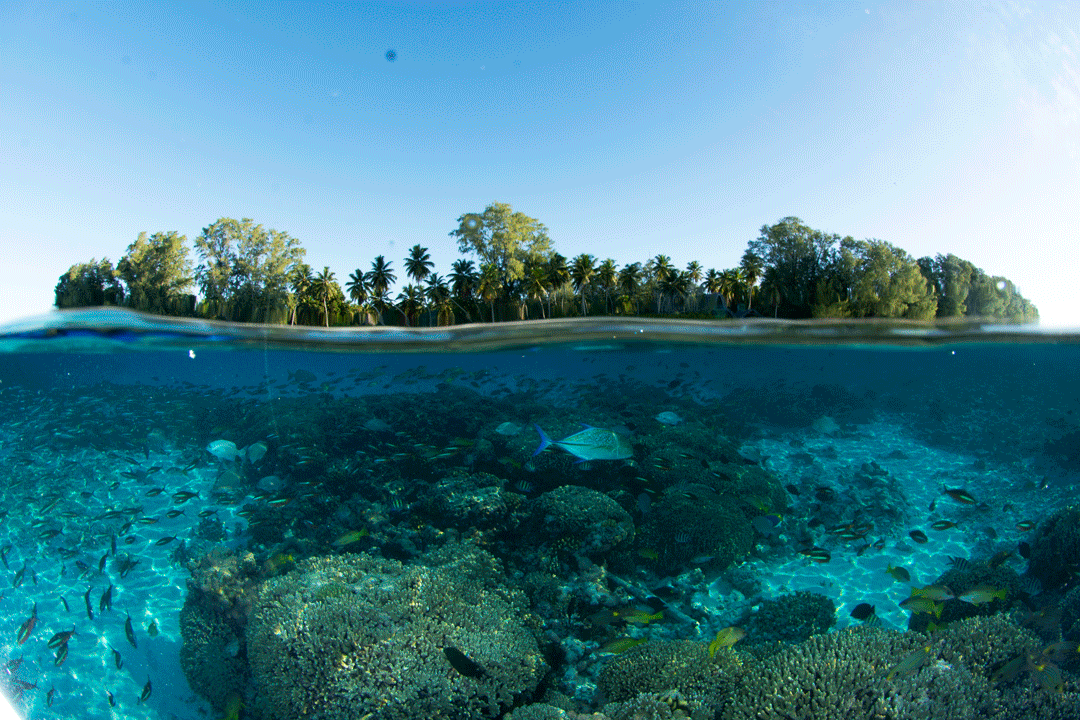Reef manta rays may promote the growth of coral reefs in Seychelles
Reef manta rays (Mobula alfredi) may be the oceanic butterflies of Seychelles, winging their way through these Western Indian Ocean waters and transporting vital nutrients to a remote coral reef, helping to promote coral growth. These results come from the latest study published by Lauren Peel, a Save our Seas Foundation project leader and PhD candidate from the University of Western Australia. The study, published this month by the Royal Society, shows that reef manta rays play a unique and important role in the complex food web that’s woven around D’Arros Island and St Joseph Atoll. The fact that these mantas return faithfully to key sites in these shallow coastal waters, bringing nutrients from deeper reaches and further offshore, highlights how important these rays are to the healthy functioning of coral reef systems in Seychelles.

A reef manta ray visits a cleaning station at D'Arros Island, Seychelles. Photo © Guy Stevens | Manta Trust
Lauren worked with co-authors Dr Ryan Daly and Clare Keating Daly, Dr Guy Stevens (Manta Trust CEO), Professor Shaun Collin and Dr Mark Meekan to understand if reef mantas play a unique role at the coral reefs surrounding D’Arros Island, or whether their place in the food web was similar to that of other coral reef fishes in Seychelles. After analysing tissue samples from 50 reef mantas and 20 different reef fish species, the team concluded that reef mantas are secondary consumers that have a totally unique function in the food web.

Researchers observe a reef manta ray at a cleaning station at D'Arros Island. Photo by Ryan Daly | © Save Our Seas Foundation
And so what is the food of choice of reef manta rays? These ocean giants preferred the most microscopic of seafood snacks: 45% of their diet was comprised of pelagic zooplankton, tiny animals that swim near the ocean’s surface. The remaining 38% of their diet was made of emergent zooplankton – those planktonic creatures that emerge from the seabed at night and rise into the water column – and 17% was of mesopelagic plankton, which are often found further offshore, swimming in deeper ocean regions.

Lauren’s study shows that reef mantas feed predominantly on pelagic zooplankton in the St Joseph Channel during the day, before returning to a coral reef cleaning station to the north of D’Arros Island. There, while the mantas socialise and have parasites removed from their bodies, their faeces may provide the basis for a rich nutrient supply. Reef mantas are therefore hypothesised to act as nutrient cyclers: these ocean travellers bring nutrients from a system nearby, to key sites on the coral reef where their faeces are the fertilizer of sorts, helping corals grow and flourish. Reef mantas also eat emergent zooplankton, which suggests that they are also feeding at night. This might help coral reefs receive nutrients over longer timescales – both night and day – than if the mantas relied only on prey items available only during the day, as some other reef fishes are.

Lauren Peel collecting pelagic zooplankton samples. Photo © Guy Stevens | Manta Trust
In addition to reef manta rays helping to cycle nutrients around D’Arros Island and St. Joseph Atoll, their movement to areas offshore to feed on mesopelagic zooplankton in deeper waters may help to bring in nutrients from outside this coral reef system. Lauren’s previous research has shown that reef manta rays spend large amounts of time at the coral reefs surrounding D’Arros Island and St. Joseph Atoll. So, while mantas may venture off to find food elsewhere, they are dependable returnees to sites on these reefs. This kind of behaviour creates a nutrient link between coastal systems and deeper ocean systems further offshore, increasing the potential for manta rays to supply nutrients to local corals and highlighting the unique role occupied by reef manta rays in the food web in Seychelles.

A healthy reef off of D'Arros Island. Photo by Rainer von Brandis | © Save Our Seas Foundation
It’s strange to think that there is still so much to learn about one of the largest and most fascinating citizens of the seas around Seychelles and the Amirantes region. These latest insights help us understand what a healthy coral reef system needs to function, and illuminate the role that reef mantas play in distributing nutrients around and to the coral reefs surrounding D’Arros Island and St Joseph Atoll.
Reference: Peel LR, Daly R, Keating Daly CA, Stevens GMW, Collin SP, Meekan MG. 2019. Stable isotope analyses reveal unique trophic role of reef manta rays (Mobula alfredi) at a remote coral reef. R. Soc. open sci. 6: 190599.
You can read the paper here.
